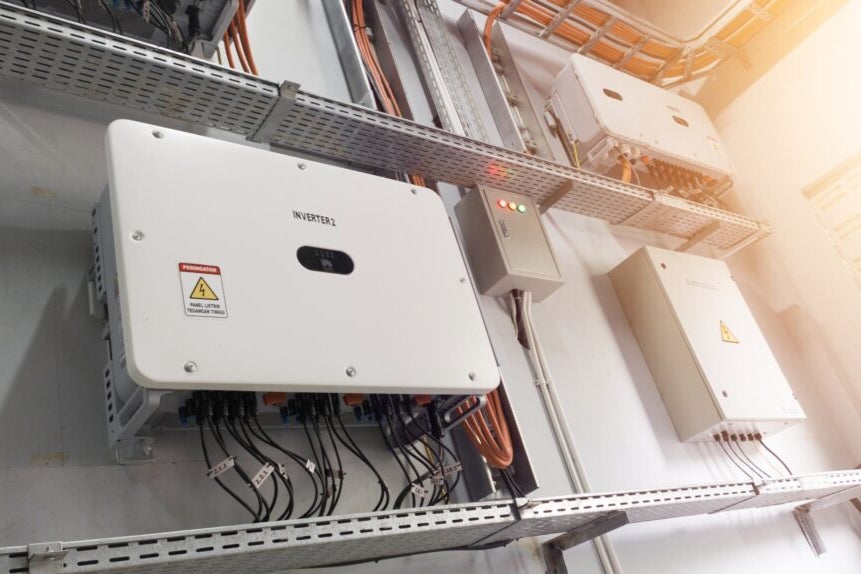Unveiling the Threat: DOE Sounds Alarm on Chinese Devices in Power Inverters
The U.S. Department of Energy (DOE) has issued a stark warning about potential national security vulnerabilities posed by Chinese-manufactured components in power inverters, critical devices that convert solar energy into usable electricity. The alert, released this week, highlights concerns over data security and grid reliability, putting seven major utility stocks—including CMS Energy and Duke Energy—under investor scrutiny as the industry faces mounting regulatory pressure.
Why Chinese-Made Inverters Raise Red Flags
Power inverters serve as the “brains” of solar energy systems, controlling electricity flow and communicating with grid operators. The DOE’s report reveals that 40% of U.S. residential solar inverters and 20% of utility-scale units contain Chinese components, with some models capable of remote access and firmware updates. Cybersecurity experts warn these features could be exploited for:
- Data interception: Collection of sensitive grid performance metrics
- Disruption capabilities: Potential to destabilize power flows during peak demand
- Backdoor access: Undocumented communication channels to foreign servers
“These devices aren’t just hardware—they’re networked computers with privileged access to our energy infrastructure,” said Dr. Elena Rodriguez, a grid security researcher at MIT. “When components come from geopolitical rivals, we’re gambling with grid resilience.”
The Financial Fallout for Energy Stocks
As regulatory scrutiny intensifies, analysts predict a sector-wide reshuffling. The seven companies most exposed to inverter supply chain risks—CMS Energy (CMS), Duke Energy (DUK), NextEra Energy (NEE), Southern Company (SO), Exelon (EXC), Dominion Energy (D), and Sempra Energy (SRE)—have seen combined market value fluctuations exceeding $3.2 billion since the DOE announcement.
“Investors are pricing in two scenarios,” noted energy sector strategist Mark Tanenbaum of Bernstein Research. “Either these utilities face costly inverter replacements, or they’ll benefit from government subsidies to secure their infrastructure. The stocks reacting most sharply have the highest solar capacity exposure.”
| Company | Solar Capacity (MW) | Price Change (7 Days) |
|---|---|---|
| NextEra Energy | 18,900 | -2.3% |
| Duke Energy | 8,400 | -1.7% |
| CMS Energy | 1,200 | +0.9% |
Industry Responses and Regulatory Next Steps
The White House is reportedly considering executive actions under the Defense Production Act to accelerate domestic inverter manufacturing, while bipartisan legislation (the Grid Security Act of 2024) proposes $2.4 billion for component replacements. Meanwhile, Chinese manufacturers like Huawei and Sungrow dispute the allegations, calling them “unsubstantiated trade barriers.”
“Our products meet all international security standards,” stated Li Wei, Sungrow’s North America VP. “These concerns reflect political tensions, not technical realities.”
Three Potential Outcomes for Utilities
- Full replacement mandates: Most severe scenario with 3-5 year timelines
- Network segmentation: Isolating suspect inverters with added monitoring
- Firmware audits: Third-party verification of code integrity
The DOE will finalize its risk assessment by Q3 2024, with new procurement rules expected by year-end. For now, utilities are walking a tightrope between grid modernization and national security—a balance that will shape America’s energy future.
What to watch: The July 15 House Energy Committee hearing featuring testimony from DOE officials and utility CEOs may reveal which regulatory path gains traction. Investors should monitor subpoenaed documents regarding specific vulnerability findings.
For deeper analysis of how inverter risks affect your energy holdings, download our free sector impact report with proprietary risk scoring for all affected companies.
See more Business Focus Insider Team

